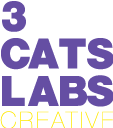A logo communicates what your brand is about to anyone who sees it. We’ll be taking a look at logos in general along with responsive logos. However, our focus will be variable logos and if a variable logo is right for your brand. After all, a logo tells your brand story, captures your brand philosophy, and of course, differentiates you from the competition.
What Makes a Good Logo?
There are a few factors that are shared amongst all good logos. To break it down into the simplest terms, a logo tells everyone who you are and what your brand is about, even more so than your actual products or services. Why? Because it’s the first impression of your brand.
It’s wrong to think that a logo is just a simple design that can be quickly thrown together and fixed later. You don’t just find a free template online and a fancy font that you think looks cool.
Why not?
A logo is not a template. A great, or even good logo cannot be cookie-cutter. A logo should be full of your brand’s attitude. It should both express and exude your brand’s aesthetics. You will get neither from a template.
A logo is not a font. Yes, wordmarks are often used in place of or as a part of a logo, but wordmarks still go beyond “just a font.”
If you truly want your brand to be successful, go with a hand drawn or custom logo that will tell everyone who see is it about you and your brand. It also won’t look like someone else’s who bought the same template as you.
How About Responsive Logos?
Warner Bros. rebrand by Pentagram
The idea that modifying a logo will lose the core identity of the brand is dead. Warner Bros., Peps, Google, and many other companies have shown that a logo can be adaptable and change to best fit use in different situations.
Everyone should have a responsive logo, or a logo that always looks natural when its displayed. It’s hard to imagine a business today where a logo won’t be appearing across different platforms, and for that reason it only makes sense to have a responsive logo. However, if you have a logo that looks natural no matter where it’s displayed, then it’s “naturally responsive” and there’s no need to complicate things.
What is a Variable Logo?
While responsive logos allow you to be flexible by adapting to different platforms, a variable logo allows you to adapt what you communicate to different audiences. Variable logos allow for brands to form stronger connections to different groups by changing different elements of the logo’s structure depending on the marketing campaign.
 City of Melbourne variable logo designed by Landor.
City of Melbourne variable logo designed by Landor.
However, variable logos aren’t new. In fact, you can look as far back as 30 years ago for a classic example of the variable logo. That classic example is the MTV logo.

Is a Variable Logo Right for My Brand?
Variable logos are completely flexible and that’s why they’re so appealing. For the reason of a variable logo’s ability to be tailored for communication to different audiences and for different purposes, brands are willing to take on the challenges of adaptability, typography, and iconography to show just how multi-faceted a brand is.
Look at how the Tretyakov Gallery utilizes a variable logo in its brand video.
But you don’t have to be a museum or center of culture. Let’s take a look at some questions to determine if you can use a variable logo.
- Do you have a variety of customer types? For example, you have customers who are bankers, musicians, and housewives.
- Do you have season specials or offers? Perhaps a special offering only during the winter holidays.
- Do you have the resources to effectively utilize a variable logo? If you are using one, you should probably make it varied at every reasonable opportunity.
Variable logos aren’t the only way to have a good logo, but they are a great way to communicate your brand and engage an entire spectrum of target audiences. With a variable logo, you definitely avoid the cookie-cutter template logo designs and will also embrace the 2020 design trend of humanity in design.
Let’s Talk About Your Brand
shane@3catslabs.com | Call +65-3159-4231
Share



